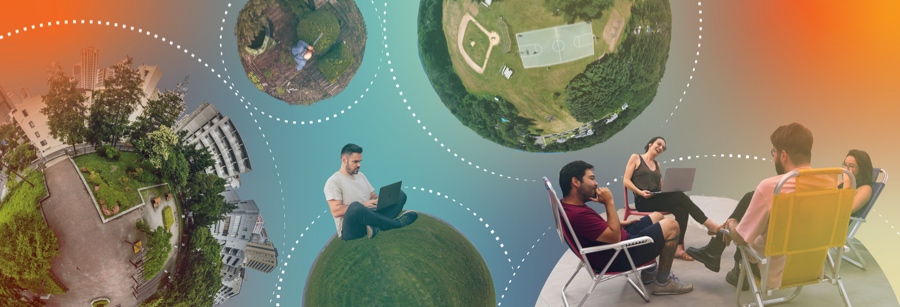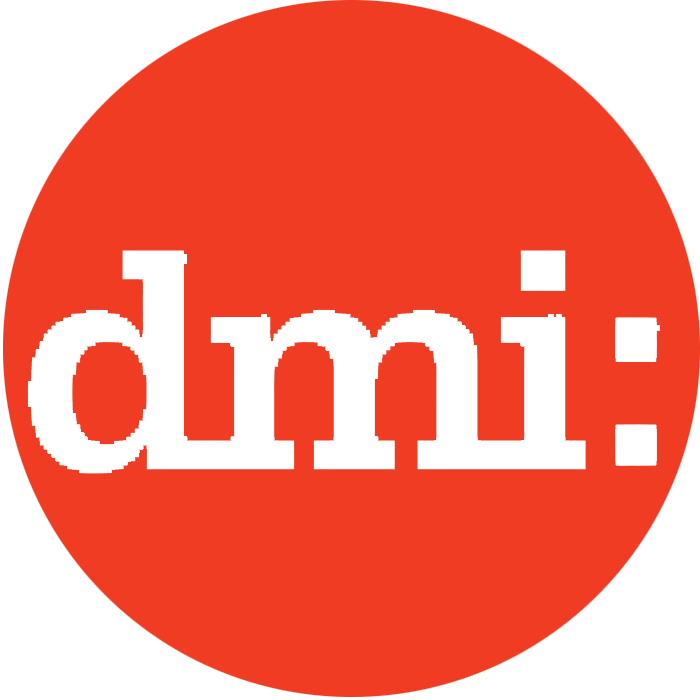Gimme the Dirt!

Being Outdoors Makes Work Feel More Like Play
Guess what? Humans are more like plants than you might think. We need daylight, fresh air, and clean water to thrive. Just like plants, we’re healthier when folks talk to us , and when we connect with each other. This Earth Day, we’re thinking about embracing nature through sustainable materials, working outdoors, and creating amazing buildings that incorporate their natural surroundings. Want to dig in (the dirt, which offers mental health benefits!)? Read more in On Our Minds.
On our minds
We’re probably all familiar with biodegradable plastic and polystyrene, made from corn and other plant products. (There is even a material called 'plastarch' which combines starch to make a plastic replacement.) But did you know that the latest hype in carbon capture is seaweed farms and, as a bonus, seaweed can be used to make edible cups and kelp burgers? Seaweed generates half the earth’s oxygen and currently absorbs as much carbon as the Amazon rainforest. It’s also one of the fast-growing plants on earth, which means its super-power is renewability. Maybe seaweed is the sustainable material of the future, a prime agent in both material and food security. Seaweed is even a form of art thanks to the work of Josie Iselin.
Or maybe we take some tips from our colleagues down-under? Today Design, a creative agency in Melbourne, occupies a zero-waste workspace, located on a single floor of an office block. The space was entirely built with available and recycled materials and designed in a way that allows for a flexible layout, with walls and seating that can be moved and disassembled, and circulation pathways that encourage interaction.
A few years ago, zero-waste advocate Joost Bakker designed a two-bedroom, one-bath zero-waste house, also in Melbourne. Organic waste is turned into gas and fertilizer, rainwater is used for irrigation, the roof is a garden — with the weight of the soil providing added protection against elements —and edible mushrooms grow on the bathroom walls.
Being inside a building shouldn’t feel like being inside a fluorescent-lit submarine. The best buildings incorporate natural elements and forms, a process that is called biophilic design. For the vast majority of our time as a species, we’ve lived in nature, its enjoyment foundational to our evolution. Now we spend most of our lives indoors, but we still crave the benefits of the natural world—among them, ventilation, sunlight (vitamin D!), and greenery (plus the accompanying oxygen output).
Unexpected sensory stimulation is one of the key benefits of being outdoors. Often buildings are a bit like barren “human zoos,” offering the same, impoverished sensory experiences day-after-day. Meanwhile, the great outdoors is full of ever-changing, unpredictable stimuli. At PLASTARC, we talk a lot about incorporating surprise and delight into design. Interactive art, programs that encourage employees to move their bodies while in-office, and interior design inspired by nature are all ways of enhancing well-being at work.
Research shows that simply providing views of the outdoors can enhance productivity and health, but actually being outdoors is even better! Just 29 minutes of outdoor-time each day may improve productivity by 45-percent, according to research. More flexible workdays and environments offered by distributed work make it easier for us to make space for outdoor time. But beyond spending personal time outdoors, being in nature with our coworkers may help us cohere as a team, think creatively, and come up with innovative solutions. Think back to your university days. Didn’t you love that professor who occasionally held class outdoors, under a sprawling tree? Approaching problems from a physically different point-of-view may help us think outside the box metaphorically, as well.
When planning corporate retreats, think beyond hotel conference rooms and the tired trust falls and rope courses. Why not go on a hike or even a camping trip with your colleagues? When you spend time with people in unfamiliar environments, you learn more about who they are and how they interact with the world. Recently, we reconnected with former classmate, Bart Foster, who has built a business and career out of facilitating unique, nature-based corporate experiences. Similar to our design approach, Foster sees nature as a “silent partner” in resolving corporate challenges.
We’ve been talking recently about how “on-site” is the new “off-site,” how offices are now “destinations” and that, when we go to our offices, it should be for a particular reason or a type of work that is location-specific. This is simply an extension of that concept. Some types of work are best suited for a conference room. Some are best suited for your kitchen table, and some are best suited for a group stroll through the forest.
Educators get this, which is why there’s been a push for more outdoor learning—including the development of forest schools—for several years. Children who attend forest schools are statistically more active and less likely to catch colds and viruses. Our bodies may be bigger now, but exercise still helps reduce allergies and being outdoors reduces cortisol levels, muscle tension and improves cardiovascular functioning.
So this Earth Day, let’s nurture the planet that sustains us with our material choices, but also, let’s let it nurture us, by inviting the fresh air in and spending time basking in all that the great outdoors has to offer. Go on a field trip with your project team, with your coworkers, get out and smell the roses (or the dirt, or the pine forest). Because playing in the dirt really does make us happier!
From the archives
Just a few springs back, we were all reeling from the impact of Covid-19. In retrospect, we realize how and where we work will never be the same. At PLASTARC, we were thinking about how to navigate the post-pandemic workplace, how Covid has transformed our offices for the better, how to transition back to public workspace, and how to rethink offices for lower density, while making office spaces more flexible and resilient.
Curious how Earth Day came to be? Check out “Force of Nature,” an episode of NPR’s Throughline podcast that traces the bipartisan pathways of our first earth-friendly legislation. It’s a nice reminder in this election year that we can, and have, reached across the aisle to collaborate for the greater good.
In Case You Missed It
Right now we’re all busy springing from this event to that. Let us catch you up on some of the cool happenings you may have missed because, honestly, no one can do it all!

Art at Work
Well-curated art plays an important role in a healthy workplace, per PLASTARC founder, Melissa Marsh. It emphasizes inclusivity and collaboration and demonstrably fosters a sense of belonging.

Educating in Design for Education
PLASTARC weighs in on how data-based observations and smart building technologies can help us tailor educational spaces to specific learning styles, and learn from our own design efforts.

Sustainable Design Isn’t Just Materials
The third Design for Freedom conference tackled things building and design professionals can do to advocate against forced labor in the industry. Step one? Ask your suppliers!

Goodbye to One of the World’s Best-Known Sculptors
Richard Serra, known for his looming, steel sculptures, has died at 85. Serra’s work, in reshaping basic building materials such as steel, is truly transformative to experience.

Beloved Animator & Film Producer Passes
Eli Noyes, an early claymation artist, who worked on hit shows such as Eureeka’s Castle and co-founded the production company behind Toy Story, died at 81.
Looking Ahead
Flowers and greenery are coming up all over the place! What else is popping up in the weeks ahead?






